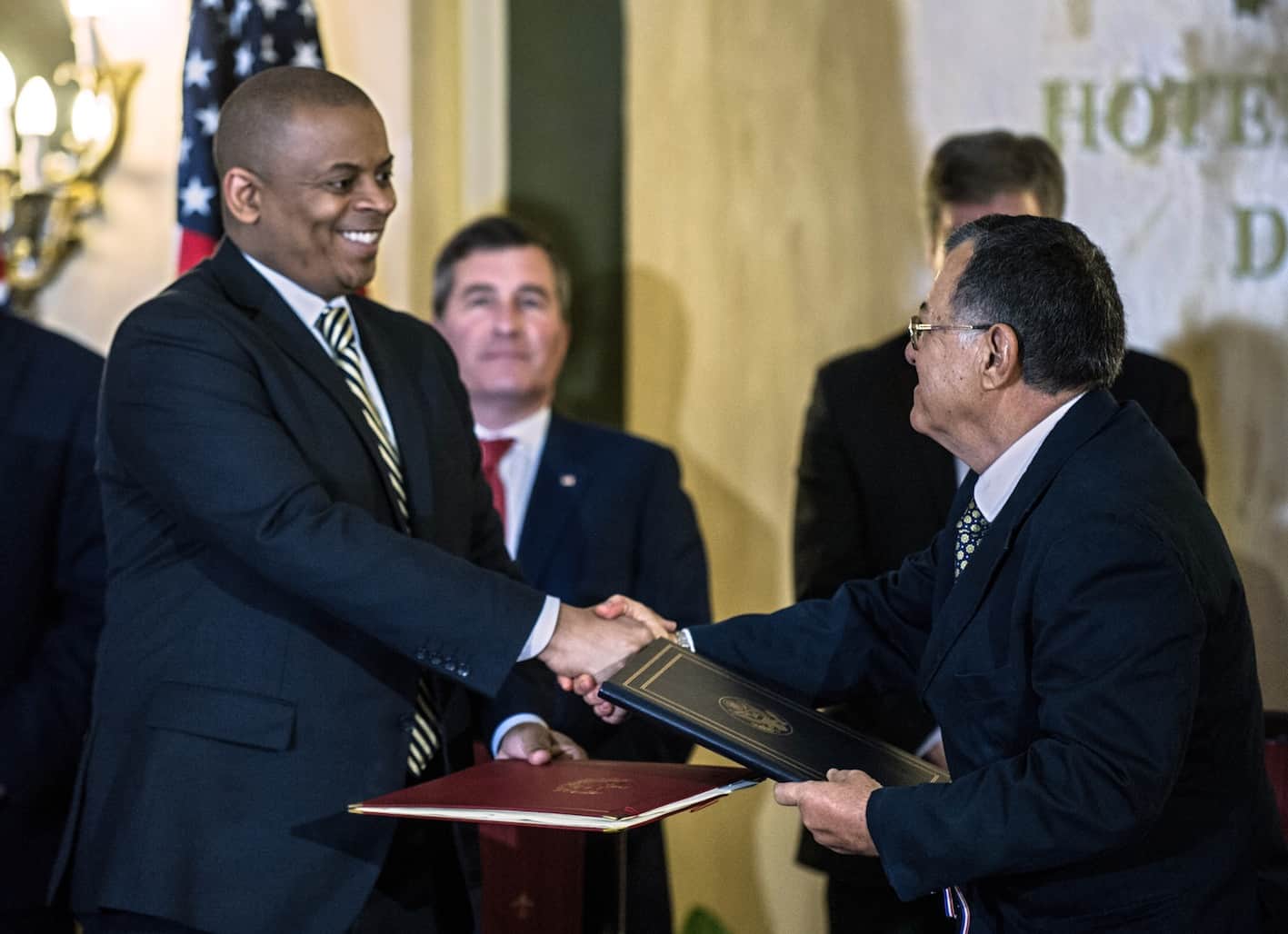HAVANA — The United States and Cuba signed an agreement Tuesday authorizing daily U.S. commercial flights to the communist-ruled island for the first time in more than 50 years.
The deal allows up to 110 daily flights to 10 destinations in Cuba, with about 20 of them to the capital Havana, where authorities have ordered renovations to double the capacity of José Martí airport.
“Today is a historic day in the relationship between Cuba and the United States,” said U.S. Transportation Secretary Anthony Foxx in Havana, where he signed the accord with his Cuban counterpart Adel Yzquierdo Rodríguez.
“For the first time in more than five decades, the United States and Cuba will allow (airlines) to establish a service between our two nations.”
Rodríguez said the agreement marked “the start of a new era in air transport links between Cuba and the United States, which will contribute to the deepening of ties between our two countries.”
Currently, all flights between the two countries are charter flights.
U.S. authorities said they would immediately invite American airlines to submit applications to operate the flights to Cuba, with routes to be set up within months.
The Cuban government will also give “thorough consideration to future requests from the U.S. government to increase this level of service,” said U.S. Deputy Assistant Secretary of State for Transportation Affairs Thomas Engle.
The agreement allows for regular flights “between any city in the U.S. and any city in Cuba,” provided it is equipped with infrastructure for international air travel, he added.
Airlines in the two countries can now strike deals on code-sharing and aircraft leasing, the Cuban embassy said in December when the plan was announced.
However, travel by U.S. tourists is still barred under the trade embargo that the United States slapped on Cuba in the 1960s after Fidel Castro came to power in a revolution.
The U.S. Treasury Department has set 12 categories of authorized travel including for artists and journalists.
Multiple destinations
“Initially, the U.S. carriers will be allowed to fly 20 scheduled frequencies per day to Havana, the largest market, and remember that the current level is zero,” Engle said.
They may also “fly 10 scheduled frequencies per day to any other city in Cuba that has an airport open to international service.”
Besides Havana, flights will be allowed to Camaguey, Cayo Coco, Cayo Largo, Cienfuegos, Holguín, Manzanillo, Matanzas, Santa Clara and Santiago de Cuba.
The agreement formally opens the door for Cuban airlines to start operating future flights into the United States.
But Deputy Assistant Secretary for Aviation and International Affairs Brandon Belford said Cuban airlines will still have to obtain their own licenses from U.S. authorities.
“So we do not anticipate Cuban-owned aircraft serving the U.S. in the near future,” he said.
Call for applications
On Tuesday, the Treasury Department was to invite U.S. airlines to submit applications to be allocated the new flights to Cuba.
American Airlines, Delta and United Airlines have previously expressed an interest in running regular flights to Cuba as has JetBlue, which already operates charter flights.
Belford said “carriers will have 15 days to submit their applications if they want to serve Havana and the other nine airports.”
All final decisions will be made in within about six months.
“Our expectation is that we will be in position to make a decision and make it final sometime in the summer, in terms of which carriers and which U.S. cities will have service into Cuba,” Belford said.
Commercial flights between Cuba and the United States were cancelled 53 years ago but since the mid-1970s, authorized charter flights have been allowed under certain conditions.
Cuba is strengthening its foreign commercial ties after formally restoring diplomatic relations with the United States in July.

